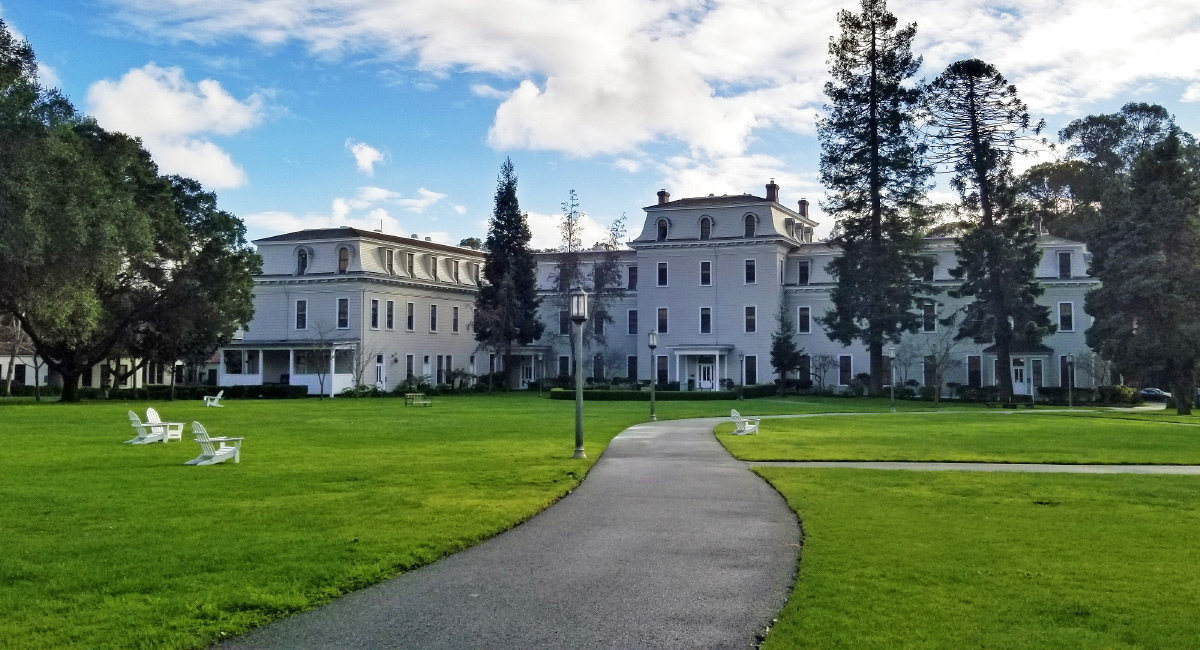In the late nineteenth century several new colleges and universities were created near where the California Gold Rush occurred, including notables like the University of California at Berkeley and later, Leland Stanford Junior University. Long before Stanford and by some ways of reckoning even before Berkeley, however, came Mills College, the first all-women’s school west of the Rockies. Nearing the 150th anniversary of the founding of its beautiful Oakland campus, however, it announced last month that it was closing as a degree granting institution. The school has extremely valuable land and a midsized endowment, so rather than just disappear, it proposes becoming an “institute” promoting apparently feminist issues, social justice, etc. Already nearby Berkeley is planning on utilizing some Mills facilities.
In the last century, Mills was considered a western alternative to the Seven Sisters, highly regarded eastern women’s colleges like Smith, Wellesley and Bryn Mawr. Unlike some eastern schools like Vassar, Mills rejected going co-ed, albeit after a mighty campus brouhaha in 1990. It made news in 2014 when it became the first women’s school accepting transgender students.
Mills has been in decline for years. At a town hall meeting with alumni last week President Beth Hillman provided details. In 2013, total enrollment was 1,595, whereas this fall it was 961, a decline of almost 40 percent. Undergraduate applications have fallen even more. Only in two of the last 18 years has Mills operated in the black. To help cover budget deficits, the school is spending an unhealthily high seven percent of its endowment annually on operations. There is a huge deferred maintenance problem regarding the aging physical plant. My sources tell me that there are rumors among alumni that a big (perhaps $20 million or so) balloon loan taken out in the early years of the century to finance some handsome new buildings is coming due and the funds are not there to pay it off. The school may be a belated victim of the Edifice Complex common to American higher education.
At first, I thought Mills’ closing is similar to that of many other small liberal arts colleges that have bitten the dust lately, perhaps additionally burdened by its women’s only status. But other women’s schools like Bryn Mawr and Smith, both younger than Mills, seem to be flourishing and fairly highly selective in who they admit, with much larger endowments. Even more than the eastern schools, Mills is in a wealthy large population metro area with lots of prospective students living nearby.
While the pandemic no doubt hastened its demise, a good case can be made that Mills became too “woke,” too radically leftish for most Americans even in progressive California. The campus culture of Mills is too far out of the mainstream, alien to that of most Americans who can afford to attend expensive private colleges. It is one thing to tolerate and encourage diversity, but perhaps another to have a very large (65% according to the Faculty Executive Committee) majority of students of color, and also a majority who also identify as LGBTQ. Would not many heterosexual young women, who I venture to guess are at least 80 percent of the eligible applicant pool, perhaps feel turned off knowing they would be a minority on the Mills campus, and therefore not apply? Moreover, the commendable quest to encourage first generation low income students has proved very expensive—they require vast discounts on tuition fees.
On its web site, Mills calls for people to ”Join the Fight for Justice,” and quotes several students: “The LGBTQ community is strong at Mills,” “I...would like to push this country toward greater equality and...help LGBTQ youth,” “I would like to be an advocate and agent for social justice.” No mention is made about great learning experiences, wonderful internships, superb job placements, great athletic and other extracurricular activities, and little about fabulous, caring professors. I am told job placement services have been mediocre for decades. The College Scorecard of the U.S. Department of Education says undergraduate “salary after completing” ranges between $25,000 and $45,000 a year, the former figure lower than what a full-time California minimum wage worker makes. No wonder enrollments are plummeting and the school is closing.













